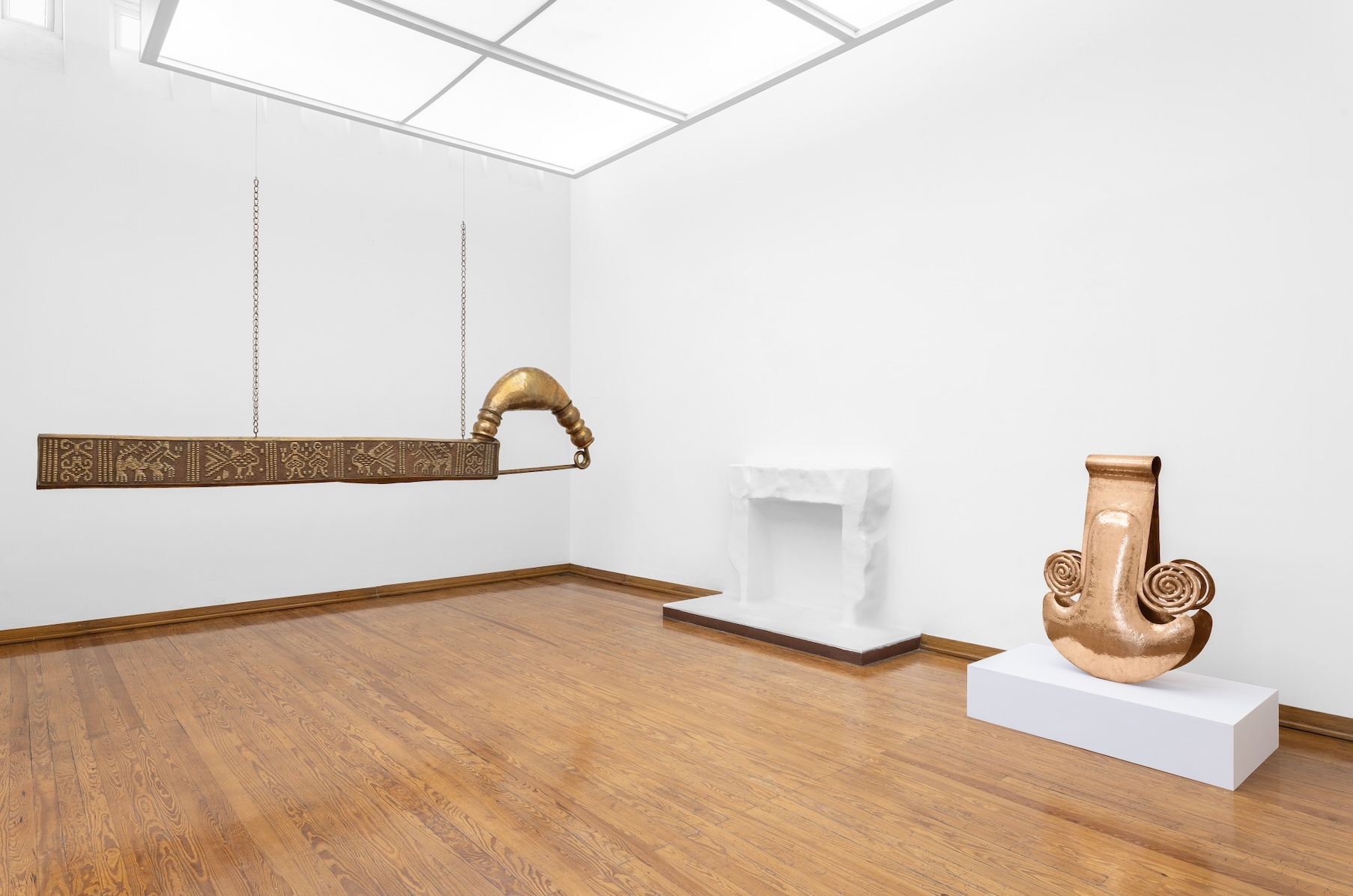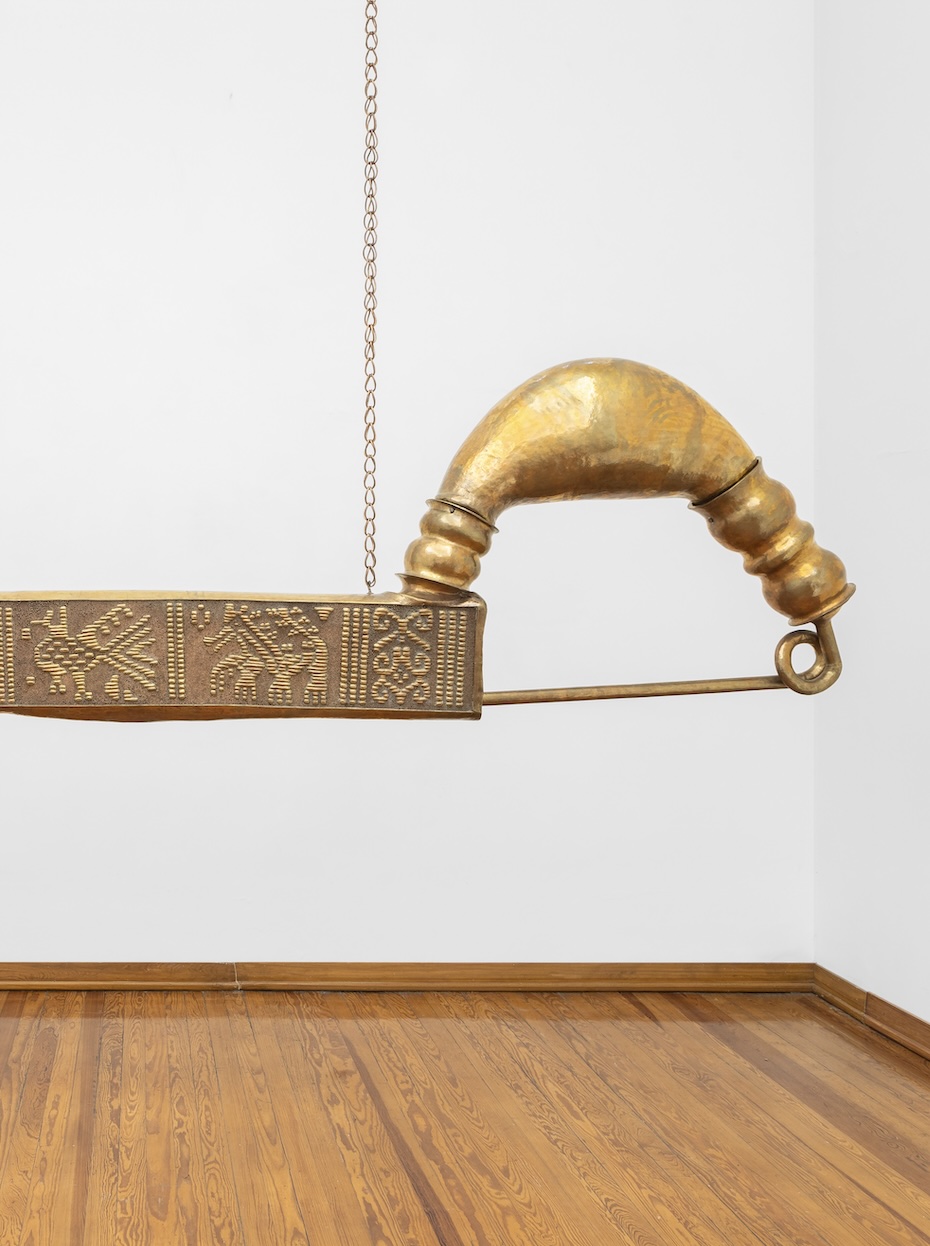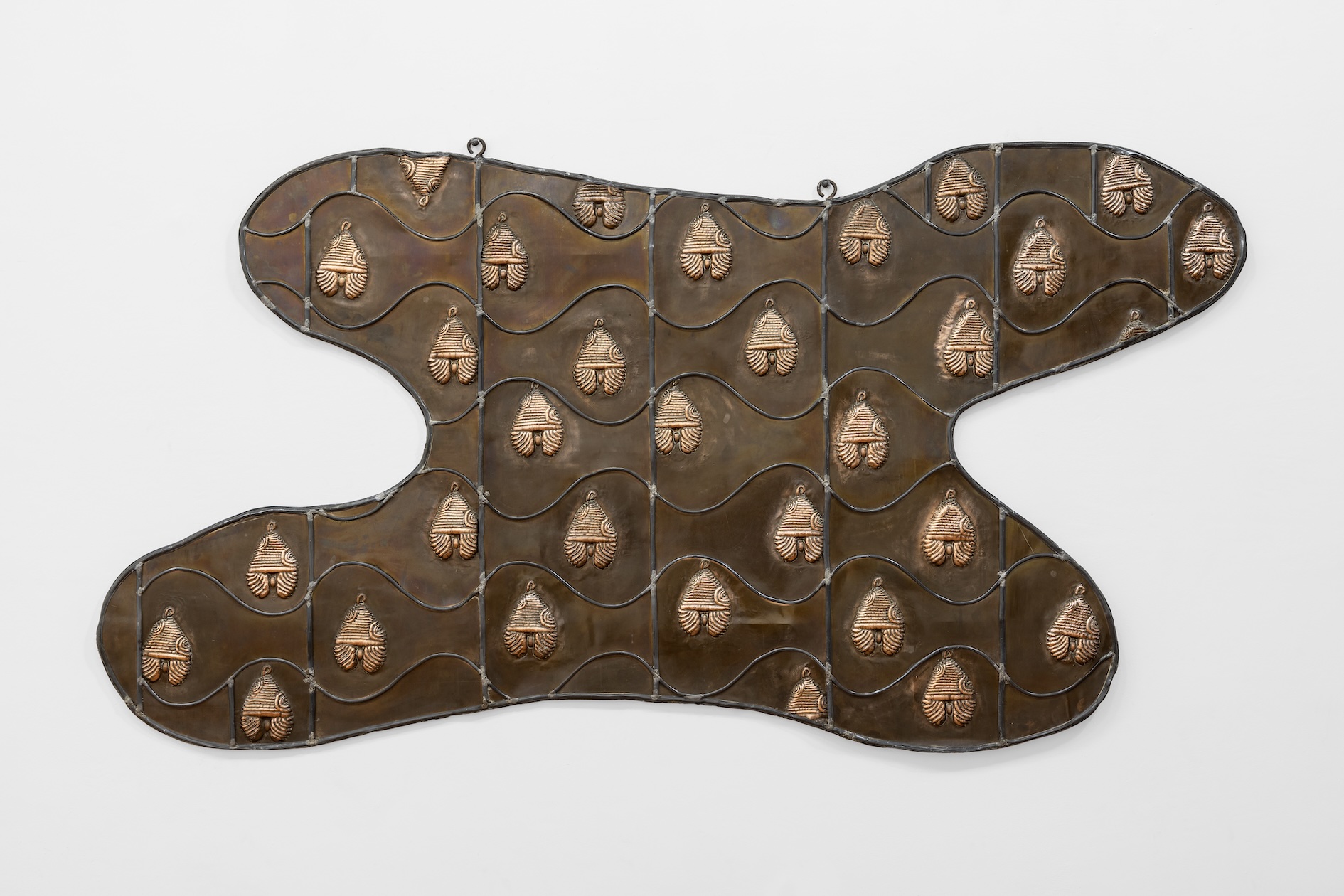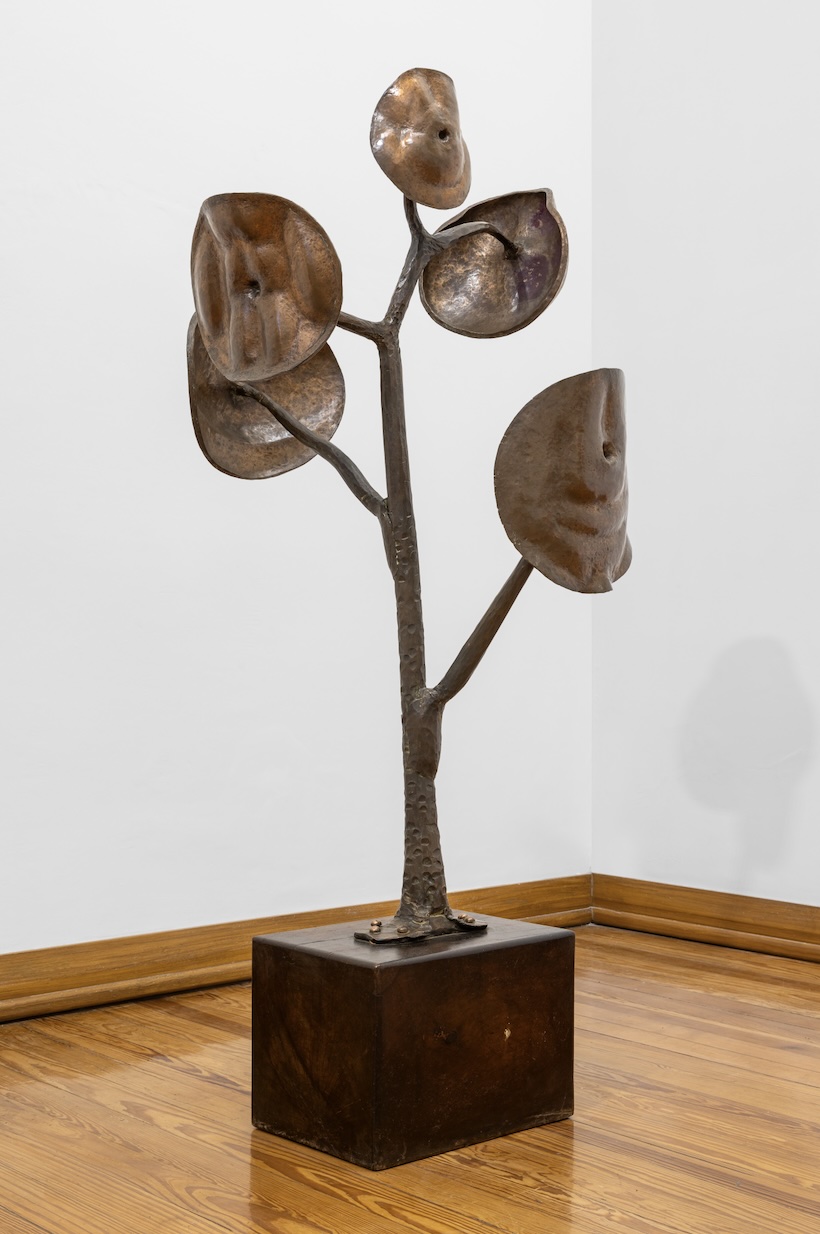
Review
You Have to Forget to Remember: Ana Pellicer at MASA
by Mariana Paniagua
Reading time
5 min
There is something that has the potential to shift how we perceive ourselves: proportion—the sense of space we occupy in relation to something else.
Upon entering the first room of Tienes que olvidar para recordar (1946–2025) [You Have to Forget to Remember], the exhibition by Ana Pellicer, we encounter large-scale objects in the distinctive hue of copper—shells that evoke the ghost of something more intimate, like earrings or pins. I immediately think of cauldrons and cooking utensils that also seem oversized, almost industrial. These shells are made of a sheet that feels very thin, still malleable, bearing the traces of heat and impact—the evidence of electricity rearranging copper atoms into form.¹

This fragility of magnified intimacy is striking in the first piece I see: Pinzas tarascas (2024) [Tarascan Brooch], a large-scale reproduction of an insignia of power once worn by the high priests of the Tarascan people on their chests.
Materials have the capacity to confront us with their scarcity, but also with their abundance, their malleability, and their scale. Copper, for instance, has been shaped since the Chalcolithic period around 5000 BCE, though archaeologists have discovered a copper earring in northern Iraq dating back to 8700 BCE.
A strange kind of nostalgia overtakes me, as if these ghosts were making their presence felt insistently—like I’ve known them, and yet have never seen them before. There’s a rawness in forcing a form to grow: a small, luminous jewel is scaled up—through the painful heat of transformation—into a hulking copper structure with its seams and soldering laid bare.
Pellicer’s sculptures move from the bodily to the monumental and back again. I think of goldsmithing, of objects made precious by their closeness to the body; in Etruscan culture, for example, gold artifacts were buried with the dead.

In a scene from La quimera (2023) by Alice Rohrwacher—a film about an archaeologist in the 1980s who becomes involved with a band of Etruscan tomb raiders in Italy—they discover a secret, damp tomb, with a pool formed by water seeping through the porous stone. The beams of their flashlights shimmer on its surface, revealing murals on the walls and ceiling, gold artifacts, and a white marble statue at the center—intact and sealed. That is how Etruscan Pin (1981) appears to me: like a treasure returned from the underground, telling—in a series of vignettes—the story of a couple, birds, and donkeys in their radiant everyday life. Despite its aura, it seems like it could still be fastened and unfastened, even at its length of 464 cm. Then comes the enigmatic Objeto encontrado en la tumba de una reina (1996) [Object Found in the Tomb of a Queen]: a copper stele crowned with an aura of glass cubes that catch and contain the ambient light. There is something mystical in these forms’ persistent reappearance in the imagination, something erotic in the modesty of antiquity—in its elusive codes and barely-describable presence in museums.
In another gallery room we find Lluvia purépecha (1995) [Purépecha Rain], a two-dimensional copper "map" etched with undulating, aquatic patterns in low relief—resembling both trojes² and a plague of crustaceans clinging to a leaf.

Ana Pellicer’s interest in Purépecha culture arose through her time in the state of Michoacán, where she taught artistic metalworking to Indigenous women in the town of Santa Clara del Cobre. In the interview shown in the gallery, she explains that “the women had nothing of their own”—they were dedicated to cleaning and selling copper. In the video, she shares how she was born in Tabasco, how meaningful it was for her to convert to Judaism, and her time in New York and Paris before returning to Mexico with new eyes.
I place myself in the 20th century, recalling women artists born in its first half and based in Mexico: Lucinda Urrusti, Cordelia Urueta, Beatriz Zamora, Ilse Gradwohl. Most had the means to travel abroad to live and study art or came from European descent. I imagine what it meant for them to be artists, the privileges required to access art markets, to exhibit in salons, to paint the intellectuals of their time. I picture Ana Pellicer returning from Paris to Michoacán—how cultural exchange clashes with the idea of sculpture and what is considered “craft.” That clash involves the economic, the structural, and above all, the labor. Proportions matter.

In 1973, Ana Pellicer and James Metcalf founded the Escuela de Artes y Oficios Adolfo Best Maugard [Adolfo Best Maugard School of Arts and Crafts] in Santa Clara del Cobre. Thirty-four years ago, they also reforested a cornfield in that town; today, it is a young forest known as “La mesa de San Miguel.” I thought of this when, at the end of my visit, I stopped in front of a small, petrified tree that looked like a bundle of copper mushrooms fused at the base. As I approached, I saw that the foliage—made of large, rounded leaves—was actually composed of sculpted bellies, rendered in realistic detail. This piece, Árbol de la vida (1970) [Tree of Life], contrasts with the show’s more auratic and opulent works. Its proportions are human in scale and in symbolic familiarity. The navels emerge from a shared stem, each with its own back. I was struck by its departure from polished surfaces—its embrace of naturalistic folds, their depth, their reverse, their one-to-one scale.
Translated to English by Luis Sokol
1: Electroforming is a process whereby copper is deposited on an electrically conductive surface, which is usually a mold. This process is based on electrolysis.
2: Trojes are the traditional dwellings of the Purépecha people.
Published on June 26 2025